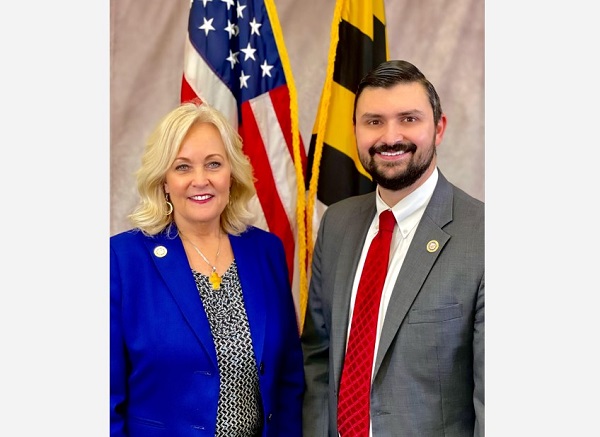The following is an op-ed piece from Delegates Kathy Szeliga and Ryan Nawrocki.
During the recently adjourned 445th meeting of the Maryland General Assembly, 810 bills passed. Approved bills are presented to the governor within 20 days of the assembly’s adjournment, and he then has up to 30 days to either sign or veto passed legislation, or it automatically becomes law. Governor Moore has not vetoed any legislation, and with Moore sharing the same party as Democratic majorities in the House and Senate, no vetoes are expected. As Republican representatives in the House of Delegates, we seek to work across the aisle to ensure a better future for every citizen in District 7A. While the legislative session is over for now in Annapolis, the Baltimore County Council continues its legislative work throughout the year.
We work closely with Councilman David Marks, who shares many of our constituents, on local legislation that impacts our community. For example, a bill currently being discussed in the Baltimore County Council would allow council members to cancel the approval for Planned Unit Developments (PUDs). This bill has bipartisan support on the Council and will likely pass later this month. In addition, the legislation will allow the council to introduce resolutions that can amend, modify, or even revoke approval of a PUD within a council member’s district. According to Baltimore County, a PUD is a mixed-use development that may combine residential, recreational, industrial, and commercial elements.
There are concerning development projects that may take place on the east side of Baltimore County that we are keeping a close eye on – LaFarge Quarry, Crane Power Plant, and Lockheed Martin closing its facilities on Eastern Avenue. Our communities have raised concerns regarding the proposed plans for these properties, the longstanding environmental concerns at all three, and a need for increased communication with the communities about these projects. Each property has a different history but contains potential environmental remediation or land acquisition measures. We are working with Councilman David Marks to investigate these issues and ensure the community has input. Also, we have sent letters to the Maryland Department of the Environment Secretary McIlwain asking about environmental concerns. Our federal delegation has also been informed and Congressman Harris has even asked the EPA to take a look at the LaFarge site.
No matter what occurs at these sites, it needs to be a well-thought-out plan that includes community input and support. Unfortunately, in the case of the LaFarge development, the PUD was a rushed process by a former Councilwoman on her way out of office. Former Councilwoman Cathy Bevins approved the developers’ PUD for the LaFarge property, giving them an exception so long as developers donate 200 acres to Baltimore County for public use. The Lafarge property has been an active mine for close to 75 years. Residents have long voiced criticisms of the county’s PUD-approval process, and they came out in droves to the LaFarge community meeting in February. The meeting was standing-room only, and some residents were even turned away because the meeting space was overflowing.
We are encouraged to see that Baltimore County’s Master Plan 2030 also looks to overhaul the PUD approval process and encourages the County to evaluate and amend the PUD process to ensure that it is transparent.
Councilman David Marks’ bill before the council to allow PUDs to be canceled or amended is a good piece of legislation. We are determined to ensure the integrity of eastern Baltimore County’s rural character remains intact. This bill is one tool in the toolbox for the Councilman and our communities — we wholeheartedly support it and encourage the Baltimore County Council to pass it into law.
Do you value local journalism? Support NottinghamMD.com today.

